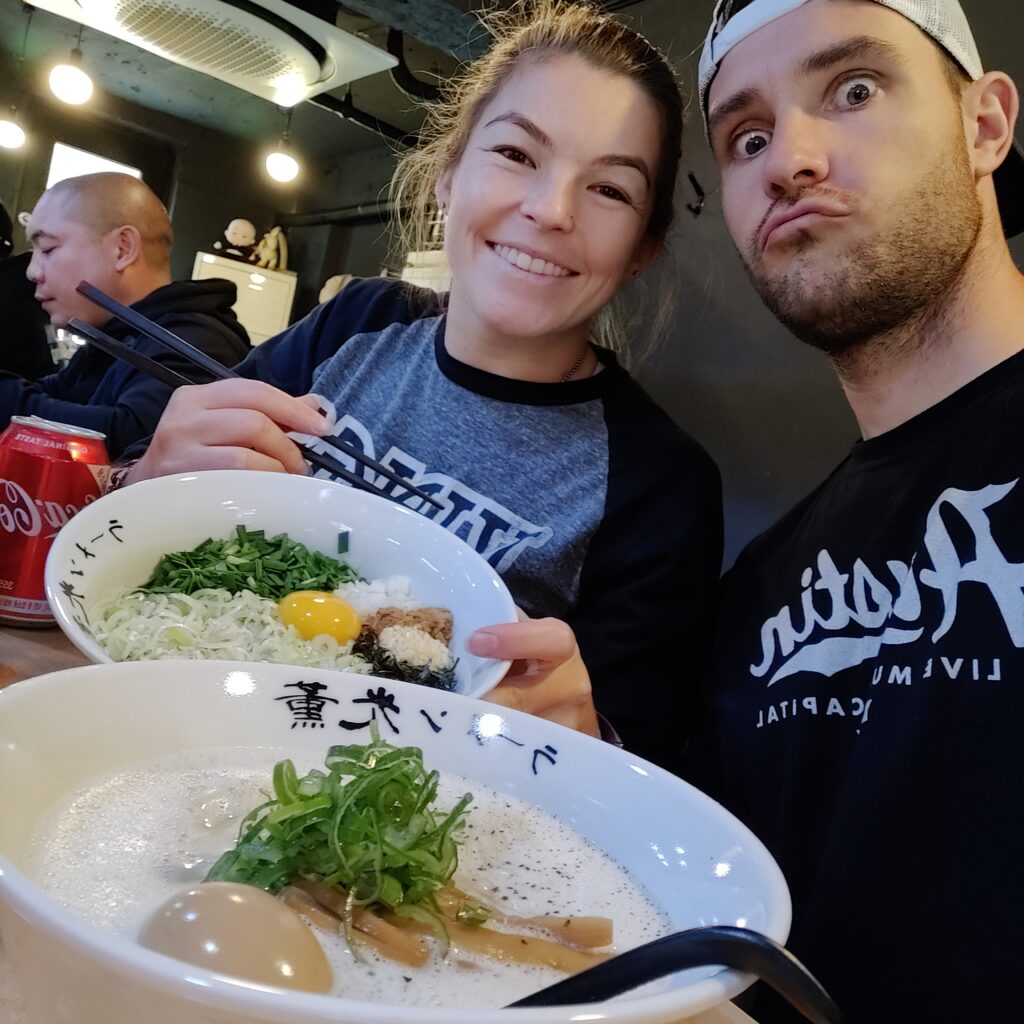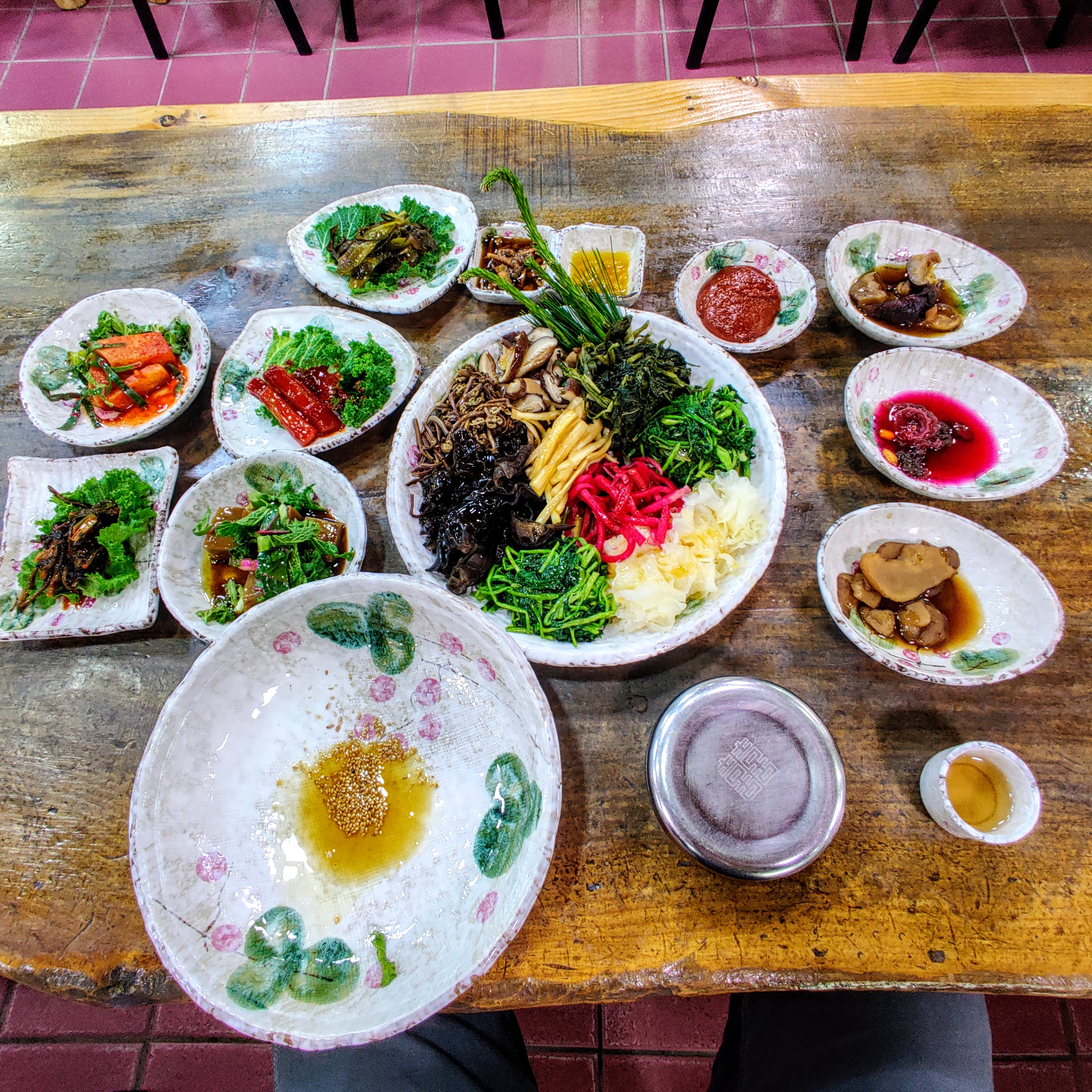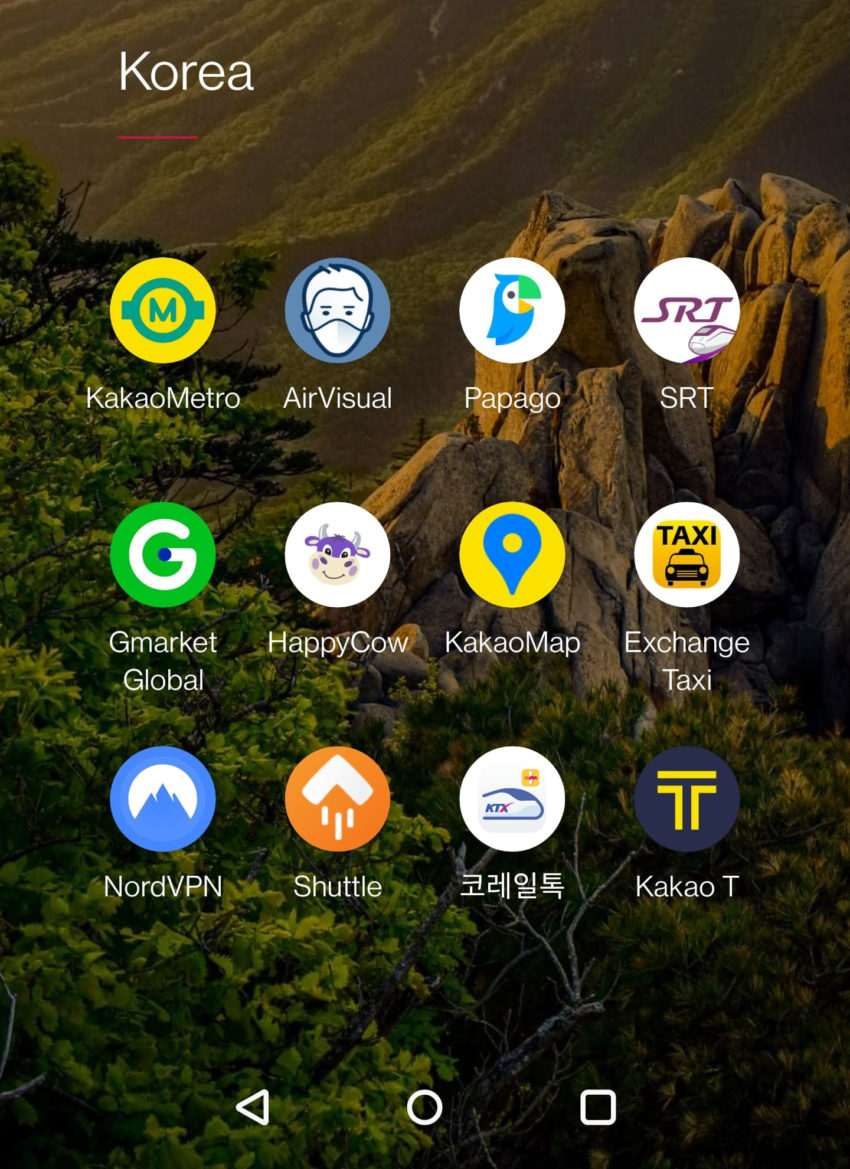Everything I know about how to thrive in Korea as a foreigner is in this article. It’s taken me ~4 months to write, and I hope you find some aspect of it helpful.
I can attribute all the success of each of my Korean adventures down to these 12 apps below. In this article I’m going to explain how I used each of these apps, and even walk you through how to use the major ones because, let’s face it, most of them are in Korean lol.
Jump to:
1. Public Transportation (SRT app, KTX app, Exchange Taxi, Kakao T, and Kakao Metro)
2. Kakao Maps (the best maps app for GPS and driving navigation)
3. Papago (translator app)
4. Gmarket (Korea’s Amazon Prime)
5. Air Visual (pollution ratings)
6. Happy Cow (to find vegan and vegetarian restaurants) – jump to “how to survive as a vegetarian”
7. Shuttle (for ordering food)
8. Nord VPN (to keep from having your identity stolen lol)
Here are the 12 essential apps (and their respective icons) for you to find in the Google Play Store or the App Store to fully experience Korea:

Public Transportation
South Korea does public transportation really, really well. It’s fast, efficient, clean, and most importantly: on time. Now, if you learn how to use this amazing resource as a foreigner, you’ll be cruising around the peninsula like a local in no time.
Ordering a taxi (for military only – Exchange Taxi)
If you’re stationed in South Korea, you HAVE to download the Exchange Taxi app; available in both the Google Play and App Store.
Once you set up your account, simply follow the on screen instructions to have a cab sent straight to your location (so long as you’re somewhat near one of the military installations on the peninsula).
Ordering a taxi (for anyone – Kakao T)
If you’re not in the military (or if you’re not near a military base), fear not! You can still order taxis just as easy you did back in the States.
The best app for ordering a taxi, no matter where you are on the peninsula, is the Kakao T app. It’s basically Uber for Korea, no joke!
Watch this quick video (below) and see how to order one yourself!
Bullet Trains
Using the KTX (my favorite)
The KTX is one of Korea’s “bullet trains”! Super fun to ride, and it can take you across the entire peninsula in as little as 3.5 hours. Of the two bullet train systems on the peninsula (SRT and KTX), KTX is definitely my favorite.
The reason I like the KTX over SRT is simply because you can book tickets through the app, unlike the SRT.
Watch the short video below on how to do that!
Using the SRT app (my least favorite)
The SRT is the other of Korea’s two bullet trains. Super fun to ride, and it can take you across the entire peninsula in as little as 3.5 hours.
The major issue (and perhaps the fallacy) of the SRT app is that you cannot purchase tickets through the app unless you have a Korean bank account. Those, by the way, are next to impossible to get if you’re a military member only stationed in Korea for a short duration.
However, if you know someone that does have a Korean bank account, you can always politely ask them to purchase you a ticket through their SRT app, and then you can reimburse them!
Additionally, the app is entirely in Hangul, the Korean language. Fear not though!
What I did was pull up the main screen, screenshot it on my phone, then used Papago to translate and then boom, I had all the locations in English!
So, with that said, here’s my recommendatons for the SRT app:
- Only use the SRT app to determine what time the trains are going to arrive/depart from a set location.
- Use a taxi/car/bike to get to the station you want to leave from
- Purchase an SRT ticket from the self-help kiosks at the train station; yes, there is a button on those kiosks to select different languages, so don’t worry!
Watch this short video (below) on how to use the SRT app!
Kakao Metro
Once you find yourself in Seoul (as we all eventually do), it’ll help to have the metro map so you can plot your adventure; this is where Kakao Metro comes in clutch.
Not only will this map give you an entire layout of all the main metro lines in the local and surrounding area, it’s best feature is that it has route-planning built into the app AND it’ll tell you when each train is arriving/departing!
Watch this video on how I used Kakao Metro to navigate Seoul like a true local!
Kakao Maps
Hands down, Kakao maps is the most user friendly maps app for tourists, expats, and westerners. You’ll hear that Naver is the go to for the locals, but after multiple times of being let down by Naver, I’ve put my trust in Kakao Maps.
The major benefits of Kakao maps are:
- It can be set to English language
- Most similar to Google maps
- Allows for personal vehicle, public transportation, bike, or walking preferences for your trip
- Gives you arrival/departure times for public transportation
- Gives you route options for fastest, most efficient, cheapest, or to exclude highways (for you motorcyclists)
- Gives you estimates for taxi costs between two locations
- Click-and-drive benefits for spontaneous excursions (i.e., click a spot, get directions)
- Tells you where the speed traps are
- Works in portrait and landscape mode on your phone
- Can set future departure or arrival times for trip planning
- Has a sort of “Wikipedia” built in, meaning you can click on a point of interest and read about it from people’s reviews/blog posts
- You can click on a mass transportation stop (e.g., a bus stop) and it’ll tell you that bus’ entire route. This will come in handy when you are tired of walking and want to take a bus. Simply click on a bus stop near you, and see if the busses that come to that stop will go by where you ultimately want to go!
Don’t just take my word for it, watch this video on how I used it to get all over Korea ever single weekend!
Papago
Papago is the best translator app for Korea not only because it’s right almost every time, it also has so many great features! For example, you can use your phone’s camera to take a picture of a street sign, menu, water-damaged magazine, whatever; and it’ll translate it for you in seconds!
Another great feature, one that I used VERY, very much, was the fact that you can upload screenshots into the app for translation. Yep, multiple times I found a webpage or an online menu that I wanted translated so I’d screenshot it, open Papago, select that screenshot, and voila; I had a translation in minutes!
Gmarket
Ah yes; you wouldn’t be a westerner if you didn’t wonder how you’d get things sent directly to your door. That’s where Gmarket comes in; it’s Korea’s Amazon Prime, but without paying a monthly fee!
Simply download and open the app, plug in your address, and shop away! The coolest thing I bought was a 3-foot long bug catcher lol.
As you know, Korea has tons of bugs (unfortunately for us scardy-cats lol). I was tired of catching them in upside down cups so, I searched “bug catcher” and within 2 days, I had a new tool to get those pesky 8-legged freaks out of my apartment!
Air Visual
I’ll be the first to tell you that no, it is not normal to have a grey sky everyday. That folks, is pollution; a result of China pumping thousands of tons of CO2 into the atmosphere in the name of globalization.

Unfortunately, it’s hard to know when certain days are worse than others simply by looking outside because, let’s face it: pollution never really ceases in South Korea. This is where Air Visual is going to be your saving grace.
If you look outside and you can’t tell if it’s just hazy from the morning dew evaporating off the rice fields, simply open the Air Visual app and see what the air quality is in your area.
Less than 50 is good to go, 50-99 is cautious, and anything over 100, I recommend staying indoors for your activities for the day. That is, if you give a shit about your lungs at all lol.
Happy Cow
Being vegetarian never used to be hard in Korea, but that was waayyyy back in the day. Nowadays it’s a tad harder but, far from impossible.
If you look at the early history of Korea, you’ll find that plant-based meals were the prominent diet. This was because meat was a luxury. You could say that the history of being able to serve meat in Korea is, in a sense, a physical manifestation of the American term, “keeping up with the Jones'”; if you could do it, you were well off.
Fast forward to 2022, meat is now served in (just about) every restaurant you find on the peninsula. As a vegetarian, this makes it hard to randomly stroll down any given street in search of a meal.
This is where Happy Cow comes in. This app is a user-driven service that provides information on where to find vegan restaurants. It also shows where vegetarian restaurants are as well!
Simply download the app, create a profile (takes 60 seconds) and presto, you now have all the intel on vegan and vegetarian restaurants near you!
No restaurants near you using Happy Cow? No problem!
If you’ve found yourself in a remote valley of South Korea and there’s noooo Happy Cow restaurants near you, you’re still in luck. Knowing the top Korea vegetarian dishes (and how to pronounce them) will go a long way, so look at the list below and memorize it!
These dishes are very, very common all throughout Korea; remember the whole used-to-be-vegetarian-diet thing I mentioned earlier? They have stayed true to their roots lol and most every place will have one of these dishes below for your grumbling belly.
Here are my top vegetarian dishes in order of most favorite!
1. Japanese Raman
Lol I know I know, I’m starting off my “Favorite Korean Food” list with a Japanese dish but, it’s my list and I’ll do what I want lol. The flavor of this food was soooo memorable, I’ve considered going back for one of the exercises just to get some more of this place!
The best Japanese Raman was Kwanghoon Raman just outside of Osan’s walk-in gate, bar none. I always asked them “no meat” or “No gogi” (Romanized pronunciation for ‘no meat’ in Korean) and they always honored my request!

2. Bibimbap (비빔밥)
Basically a bunch of veggies over a bed of rice, simple and filling! The term literally translates to “mixed rice”
Pro Tip: you HAVE to try Hot Stone/Dolsot Bibimbap (돌솥비빔밥) whenever you see it served, trust me! Served in a hot stone bowl, the rice crisps and chars as it sits below your veggies usually it’s served with an egg, which will cook itself in the hot stone bowl. It was by far my FAVORITE meal to eat while stationed there; don’t forget to add the red paste!
3. Indian Food
Yep! I had no idea I even liked Indian food until I moved to Korea and tried it!
Indian food has a massive footprint in Korea, and almost all of their food is vegetarian or vegan! So, if you’re in the mood for something that’s going to fill you up without any meat, go for Palak Paneer or Chana Masala (Chickpea Curry)!


4. Kimchi Stew (김치찌개)
Kimchi is as common in Korea as those nasty banana spiders lol. Kimchi stew though, unlike spiders, won’t kill you or freak you out lol. A big bowl of spicy kimchi stew was perfect anytime of the year; add tofu for extra protein! The dish at the top of the photo below is Kimchi Stew, and with it comes about a dozen sides lol

5. Buddhist Temple Food (사찰음식)
With around a quarter of the population being Buddhist, this style of food is nearly anywhere you look. Essentially, this meal is exactly what it sounds like: stuff the Buddhist monks would much on while living in the temples. Usually comprised of 7-8 types of veggies, this menu item is best enjoyed with a few friends given the serving sizes!
Pro tip: the absolute BEST tasting food I think I’ve ever had in my life was the Buddhist temple food in Sokcho. Read my story about how to get there for yourself!

6. Makguksu (막국수)
Cold buckwheat noodles served in a chilled broth. You’re probably on the fence about eating cold noodles but trust me, during the summer time, they hit the spot like nothing else on the peninsula!
7. Hobak juk (호박죽) or pumpkin porridge
Oh man, a big bowl of Hobak juk on a cold day? This pumpkin-based porridge is as tasty as it was filling! Usually served with red beans on top, you have to try it!
8. Gimbap (김밥)
Likely my least favorite meal just because there’s not a lot of taste lol but somehow, I was full after eating gimbap; rice and veggies rolled up in a dried seaweed sheet.
Pro tip: Be careful, most times gimbap comes with ham or some sort of meat in it, so request you want one with only veggies.
Shuttle
It’s 3:00am, you’ve successfully stumbled home from the bars in Seoul (or Osan or Humphreys, wherever), and you’re in dire need of some pizza amiright? Or maybe you’ve just come down with a cold and you’re in need of some delicious Hobak Juk (pumpkin porridge)? Problem is, in both cases, driving is out of the question.
This is where shuttle is going to be your best friend.

Korea had delivering food to your door down to a science long before the U.S. could even spell Uber Eats lol.
There’s really not a lot to explain with regards to using the app really. Simply download the app, register your address and credit card, and then sit back and watch your bank account drain almost as fast as the drivers can deliver you food; both can be scary fast lol.
Nord VPN
There’s no denying that South Korea is one of (if not the) most high-tech civilizations on the planet. You can surf at 5G speeds from the inside of a metro car, hundreds of feet below any given cityscape, and never notice a drop in your download/upload speed.
This is due to the free WiFi that covers about every inch of Korea. Honestly, you could probably get by for months on end in South Korea without ever purchasing a cellular data plan just due to the sheer amount of free WiFi in every city.
However, every year, thousands of people’s personally identifiable information is stolen from the internet given their rather careless cyber hygiene.
This is where Nord VPN can be of assistance.

A virtual private network (VPN) is basically a encrypted tunnel between your device and the internet. It’s extremely hard to cyber criminals to see your data when you use a VPN over WiFi.
I highly, HIGHLY recommend you get a VPN for all of your devices when you get to Korea, and furthermore, never disable it. Nord VPN has great yearly plans and they do a phenomenal job ensuring that your data is protected.
The last thing you want to do is make a purchase through one of the many apps above just to have a hacker steal your credit card information and go on a shopping spree. Protect your devices; use a VPN!
In summary…
These apps were a lifesaver when I was lost, hungry, bored, or in need of a ride lol.
However, these apps are just tools. Tools to get you started or move you in the direction of what you’re really looking for: something new. They’ll get you only so far before your common sense and sense of adventure need to take over so you can really witness the full potential of every trip you embark on.
Sure, the video above shows you how to use KTX app, but where will you let it take you? Have you got a destination in mind? And yea, my top vegetarian dishes are all listed, but that’s not all of them! Are you going to make the effort to stumble into some random restaurant to see what else is out there?
Only you know the answer to those questions.
I guess what I’m trying to say is that I found these apps, or maybe they found me, because I was in search of something greater: the adventure of a lifetime. These tools helped me find things I could’ve never found on my own, and I promise they’ll do the same for you, but it all starts with your attitude; are you ready to take some chances?
If so, then prove it.
Get out there, be safe, fall back on my article when you need, and have fun. See you around!



This is awesome!! Thank you so much for sharing. Have already downloaded so many apps after reading. Can’t wait to try them out!
Thank you! If you have questions using any of them, LMK in the comments and I’ll share how I navigated through any issues 🙂
Excellent resources, Kyle! Thanks for being a great navigator during my visit!
Wow! This is amazing! I’ve no doubt this will be very helpful to so many!
Good job‼️